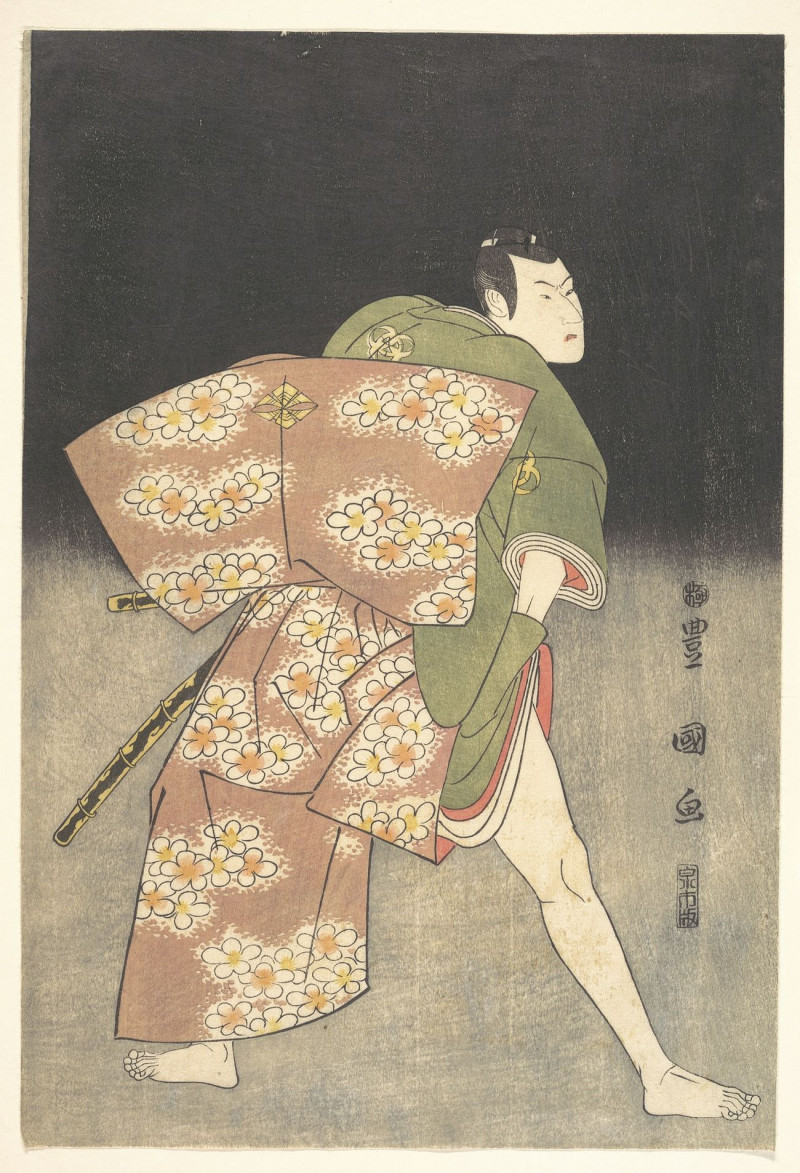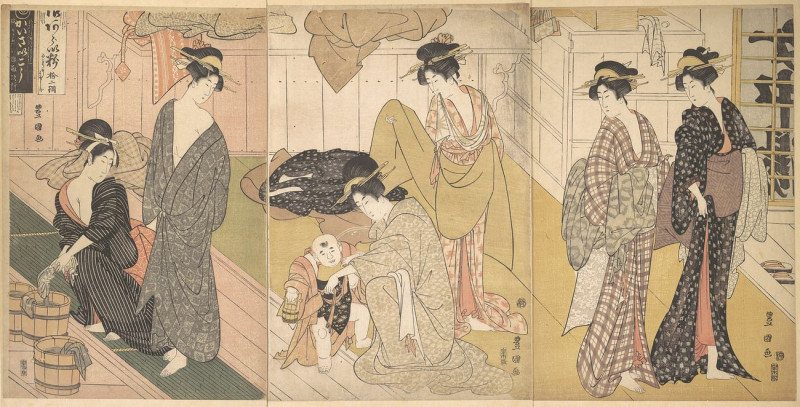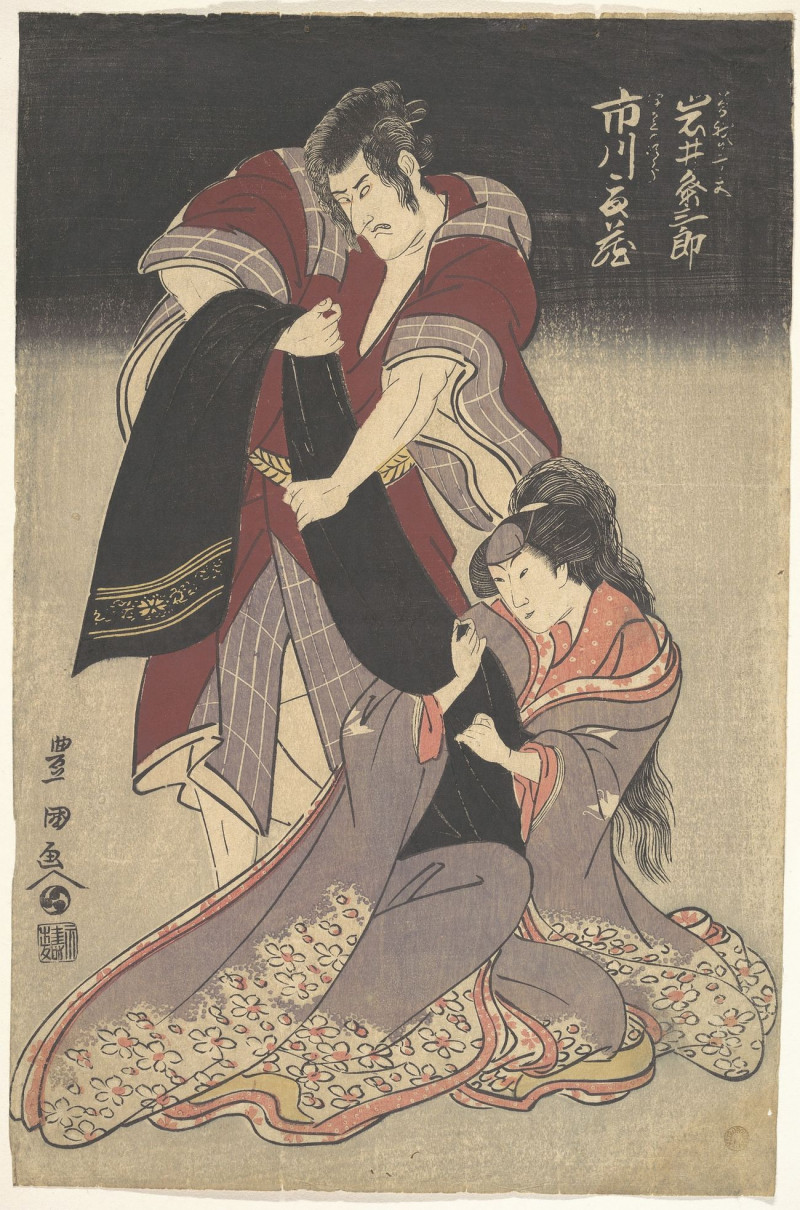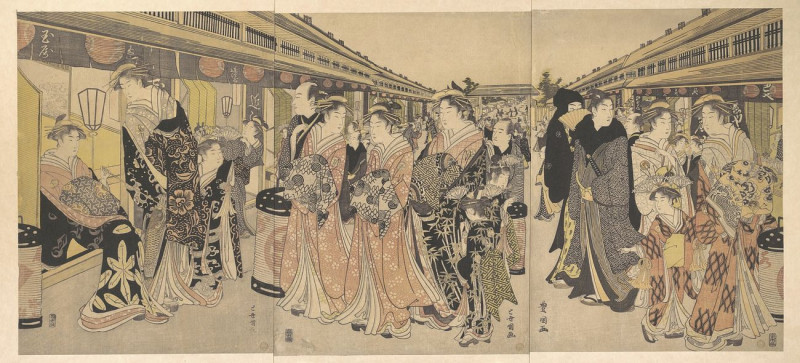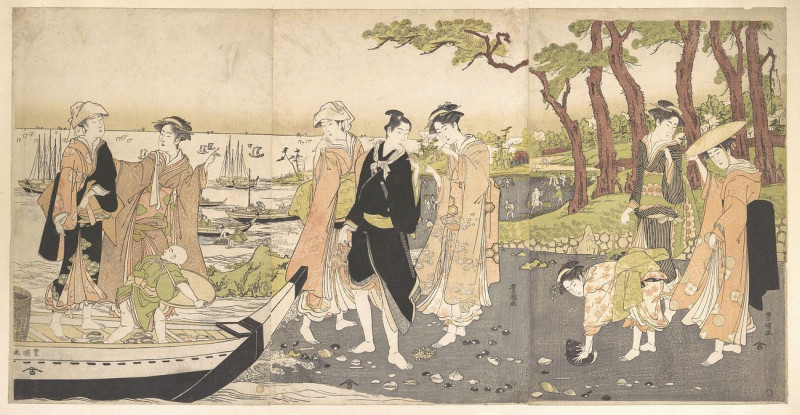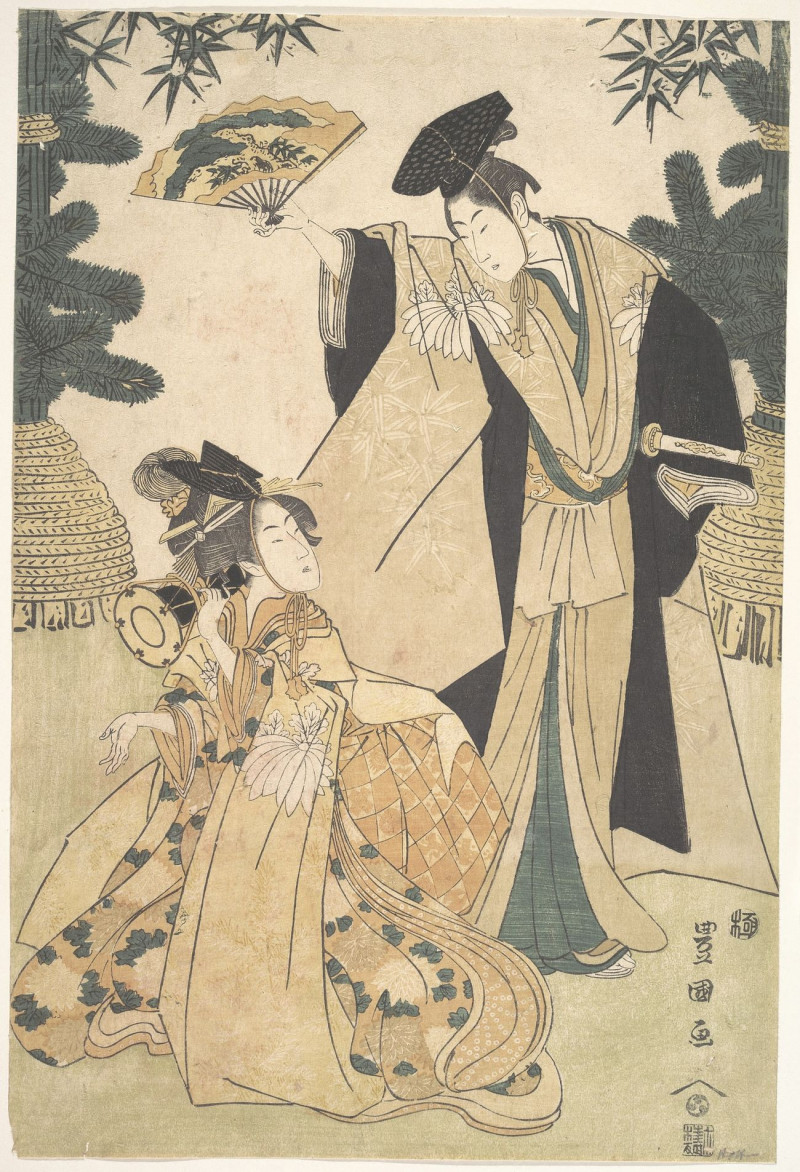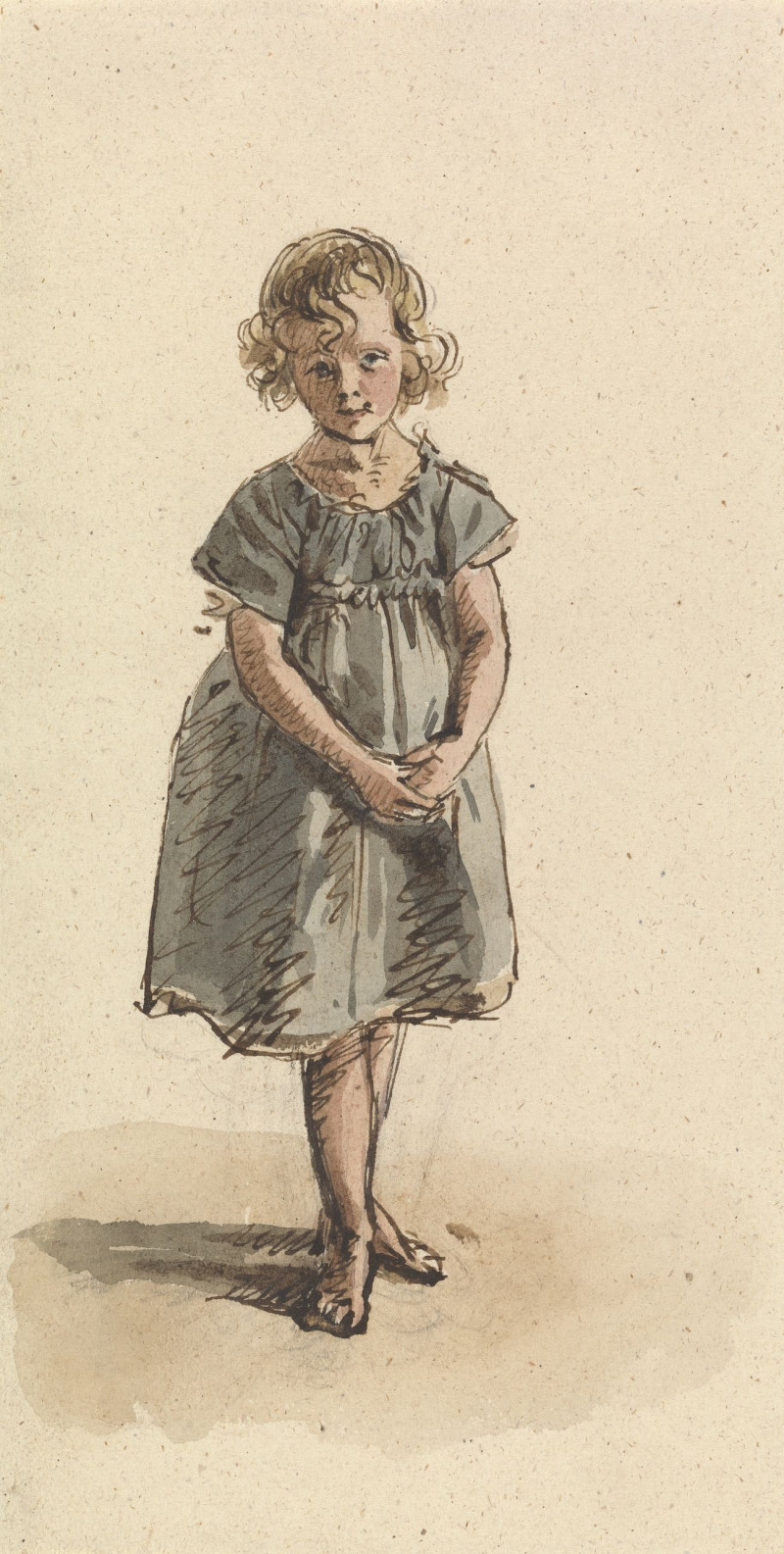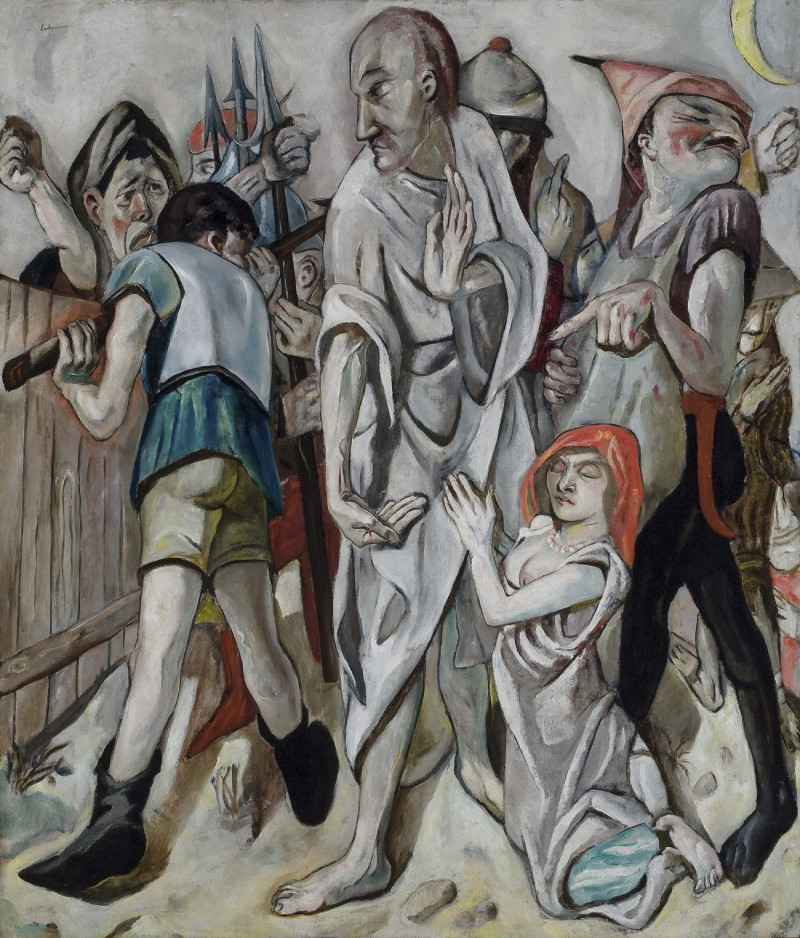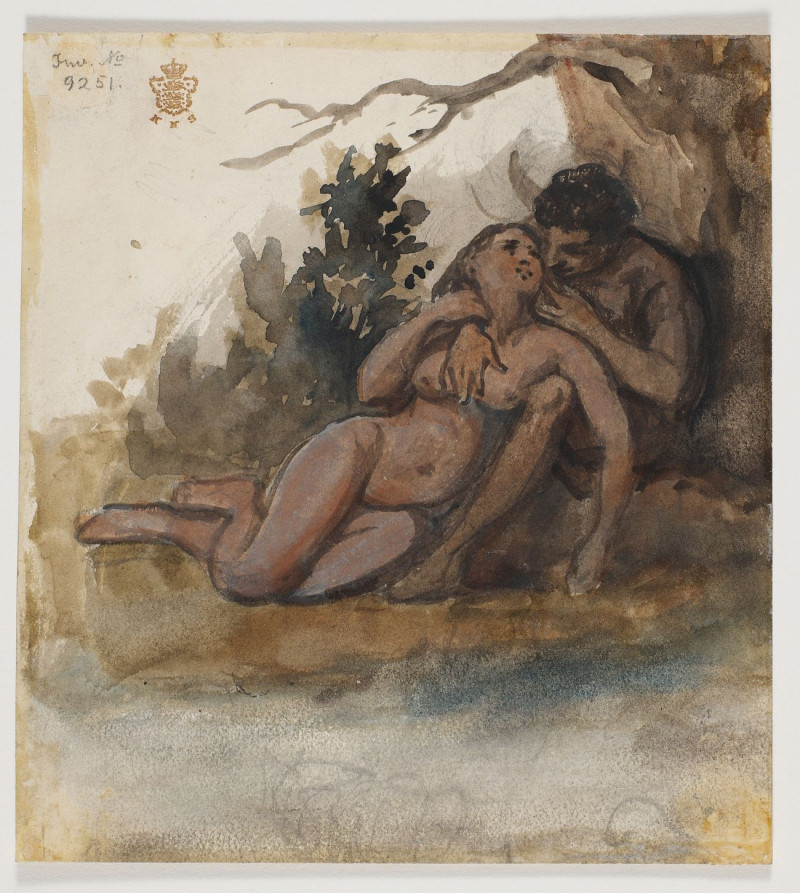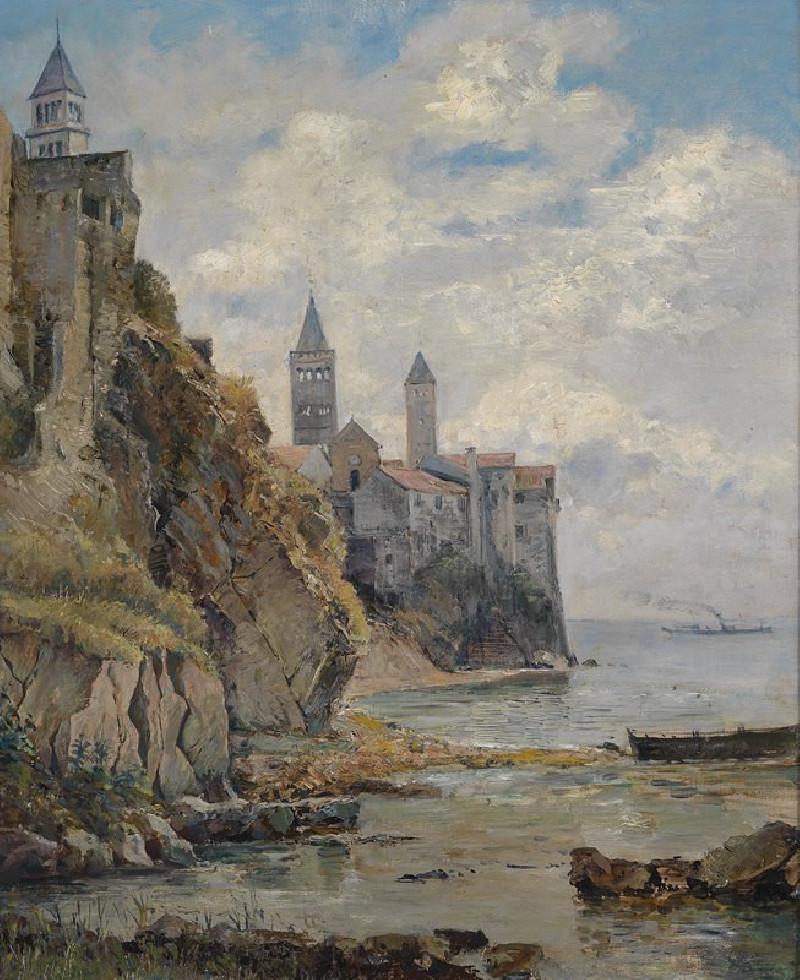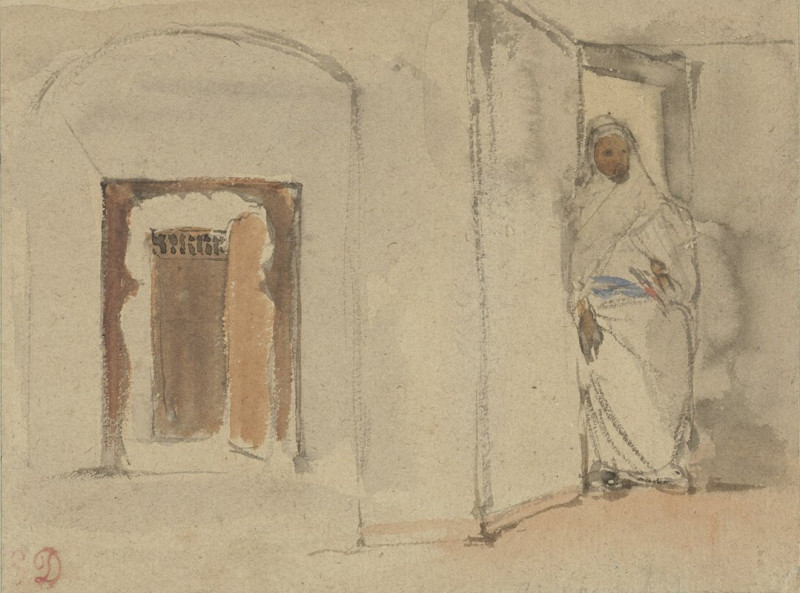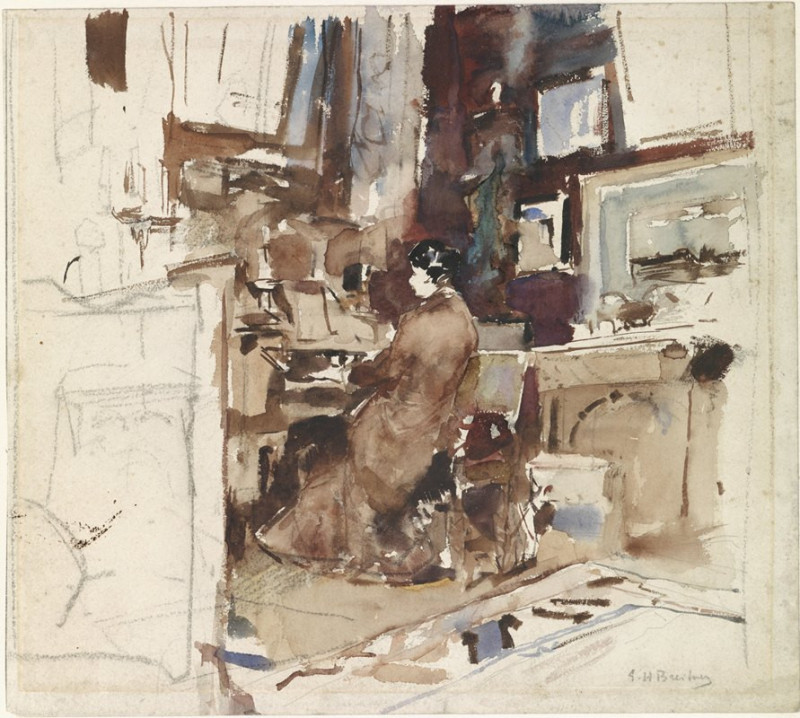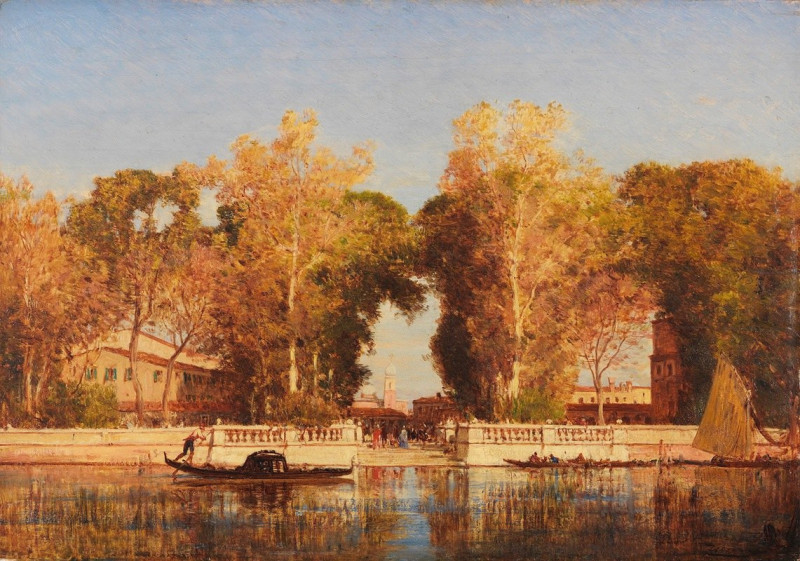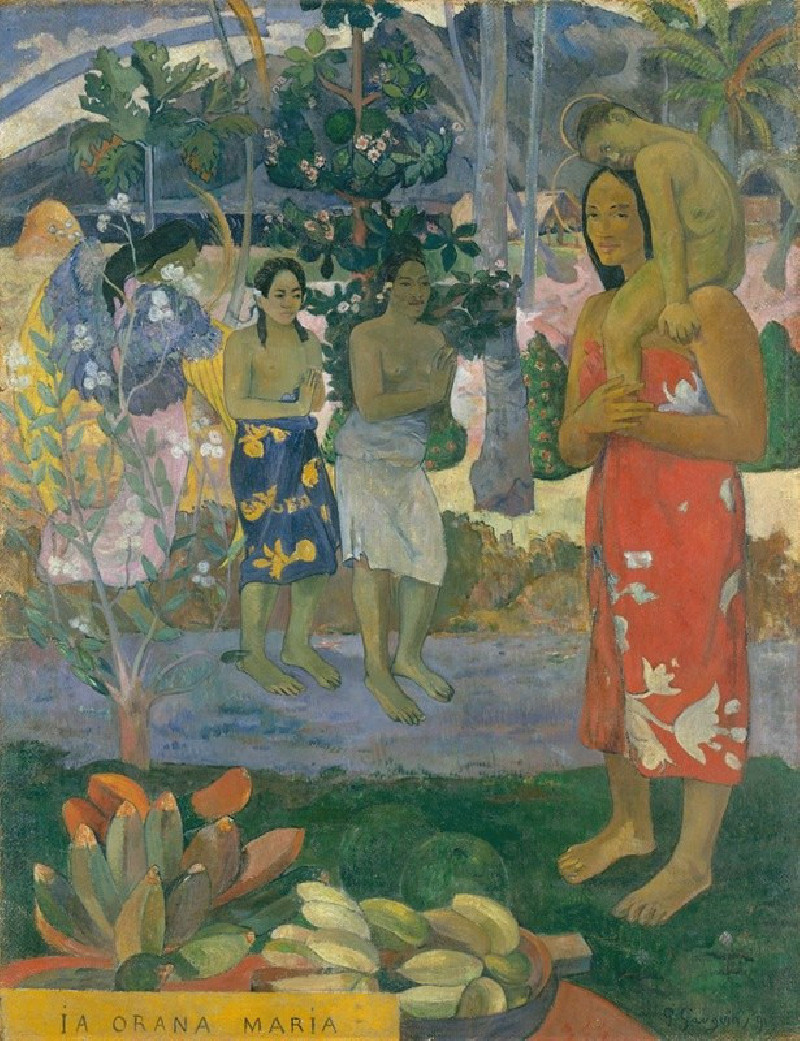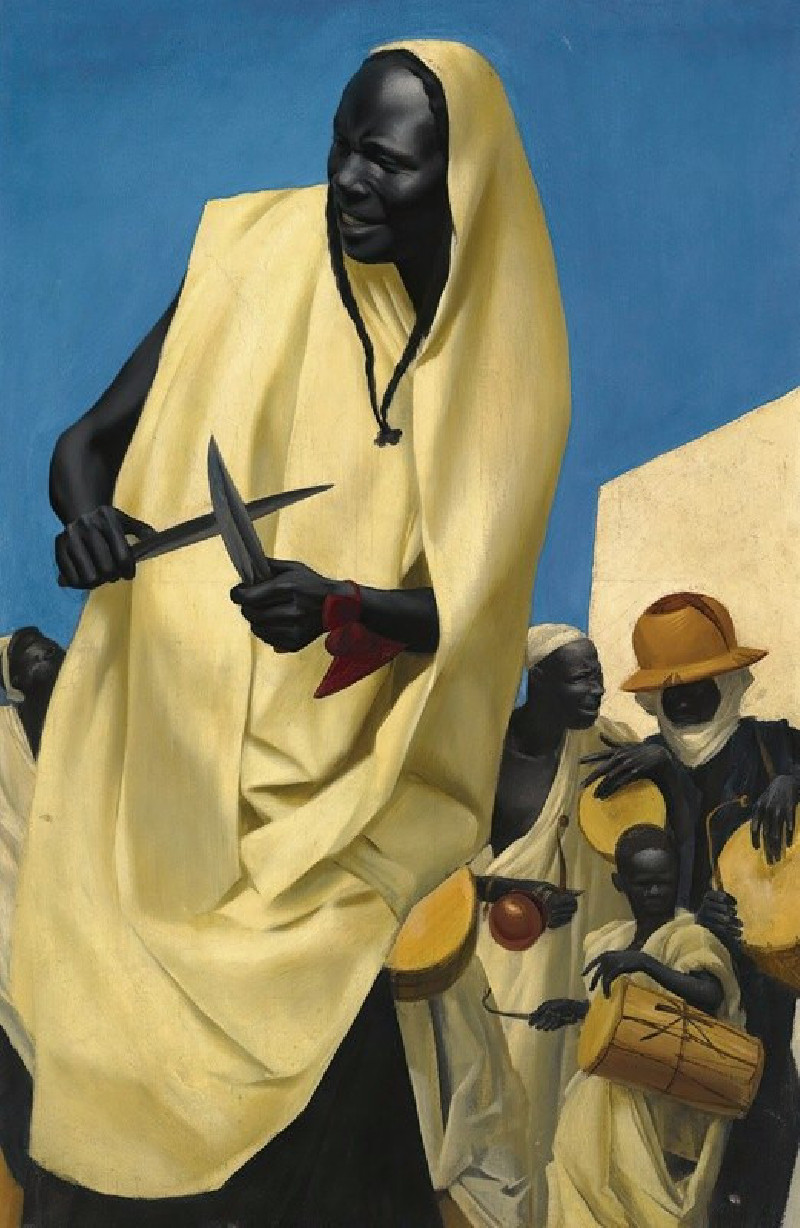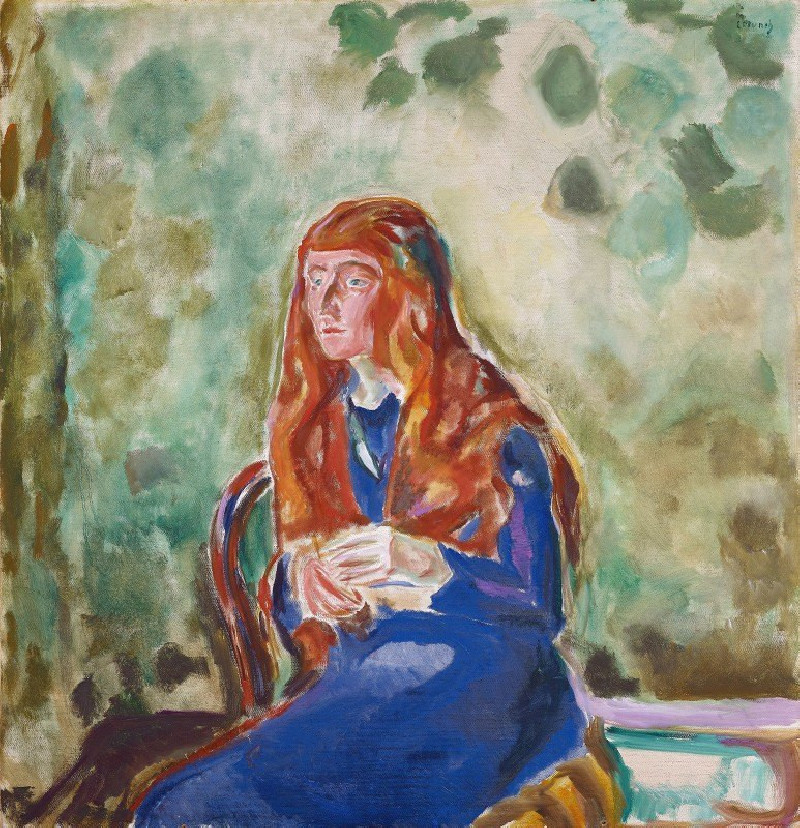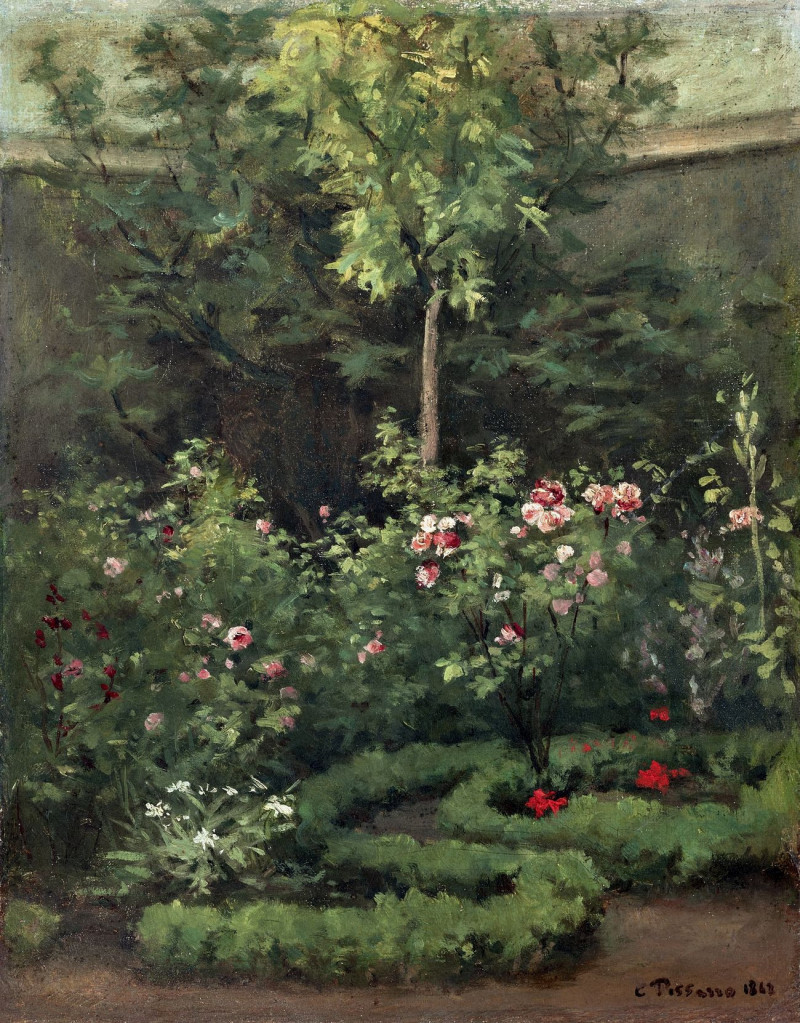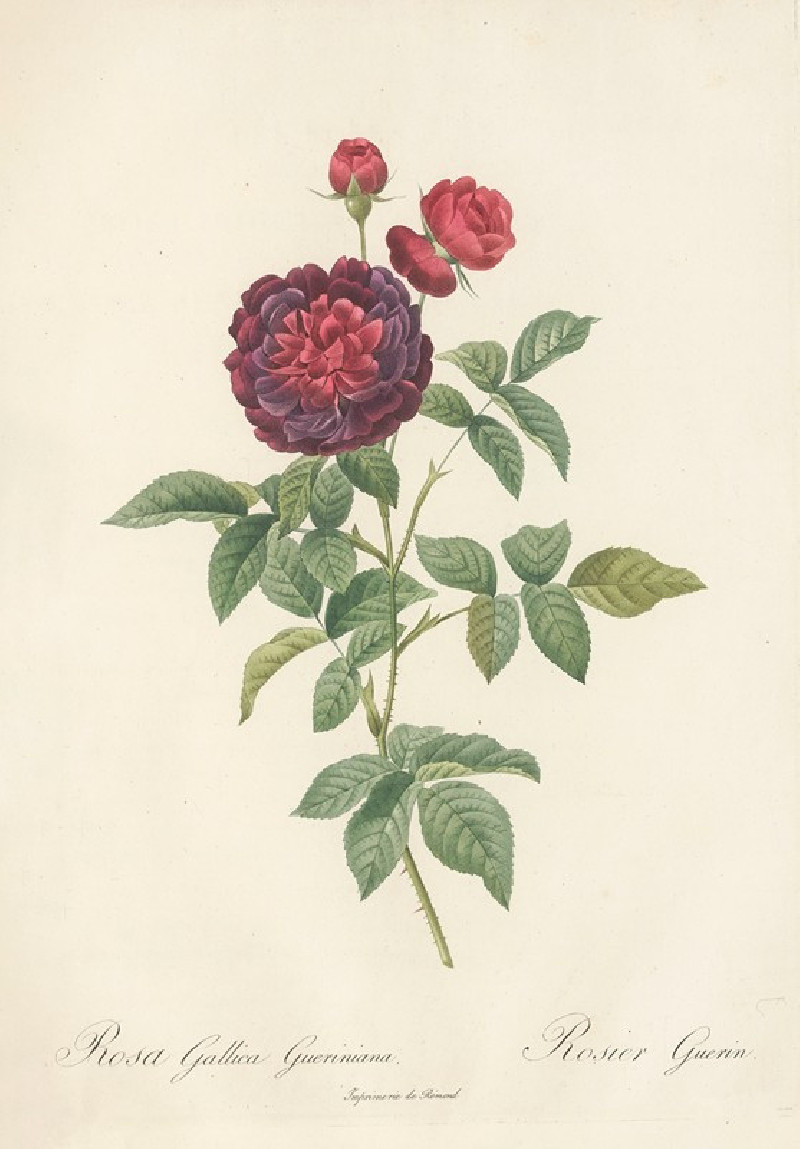The First Visit Of The Cuckoo
Technique: Giclée quality print
Recommended by our customers
More about this artwork
The painting "The First Visit Of The Cuckoo" by Utagawa Toyokuni captures a striking scene with a woman seemingly in the middle of an animated movement, possibly dancing or performing. Her expression suggests that she might be singing or calling out, possibly in response to the cuckoo’s call, a symbolic herald of spring in many cultures, including Japanese.The setting includes simple hints of nature, like the lilies in the background and the bird flying overhead, which might be the cuckoo. These elements evoke a sense of season and environment without overshadowing the central figure. The woman is wearing a traditional kimono, detailed with multi-colored stripes and patterns, which gives a vivid, dynamic quality to the scene. Her hair is elaborately styled, adorned with a yellow hair accessory that adds a pop of color to the otherwise muted color palette.On the ground next to her, there are books and what appears to be a writing box, suggesting that she might have been engaged in reading or writing before being drawn away by the cuckoo’s call. The presence of these items may hint at her being cultured or educated.The artwork, typical of the Ukiyo-e style, focuses both on beauty and the evocative, fleeting moments of everyday life. Toyokuni’s skill in creating depth and movement within the flatness of a print is remarkable, giving life and a story to the image.
Delivery
Returns
Utagawa Toyokuni (1769-1825) was a prominent Japanese woodblock printmaker and painter of the Edo period. Born in Edo (now Tokyo), he was the chief disciple of Utagawa Toyoharu, a well-respected printmaker. He specialized in kabuki theater prints, which depicted famous actors in performances and featured dramatic scenes from plays. In addition to kabuki theater prints, Toyokuni also produced portraits of geishas, landscapes, and scenes from everyday life. He eventually became a leading master of the Utagawa School.

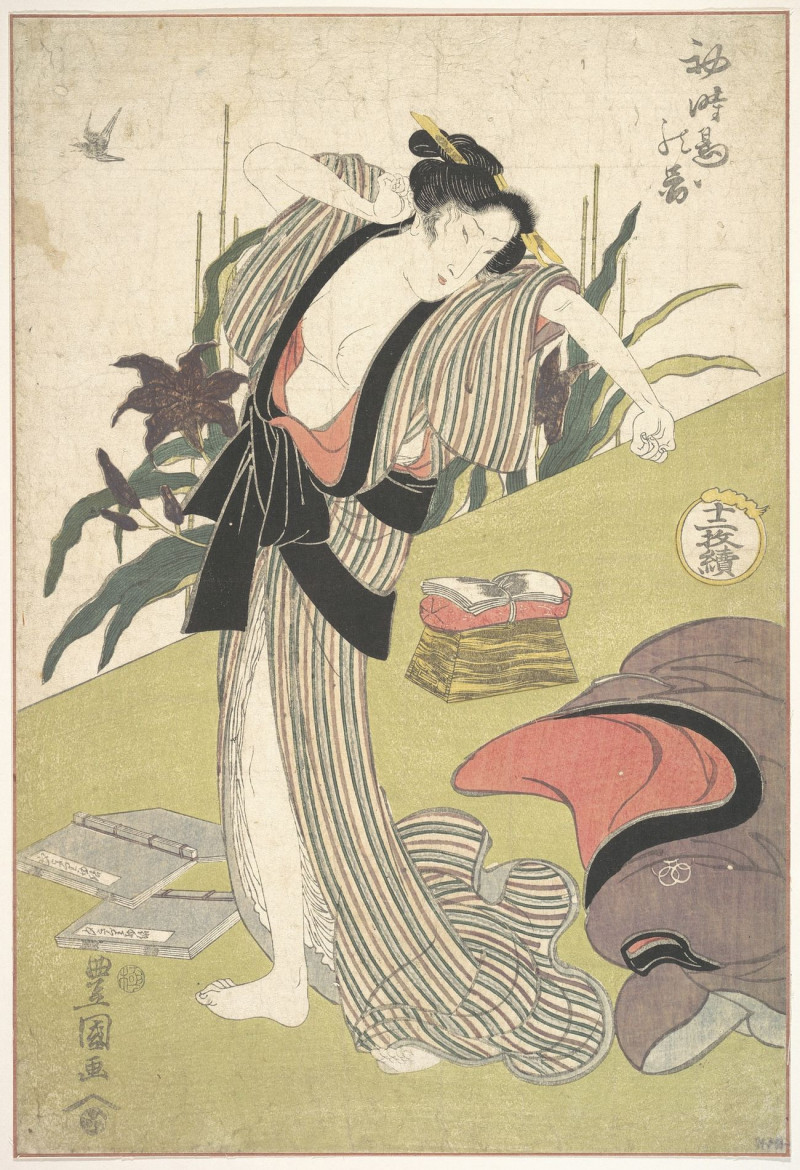
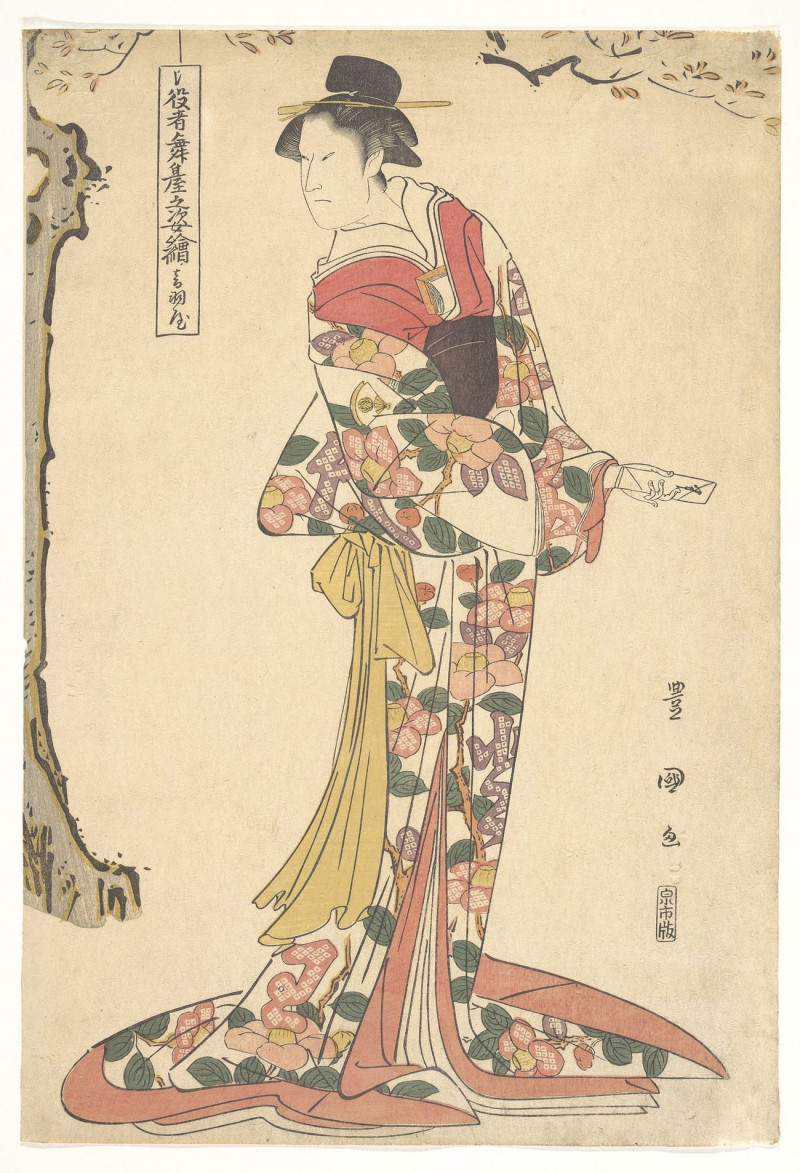
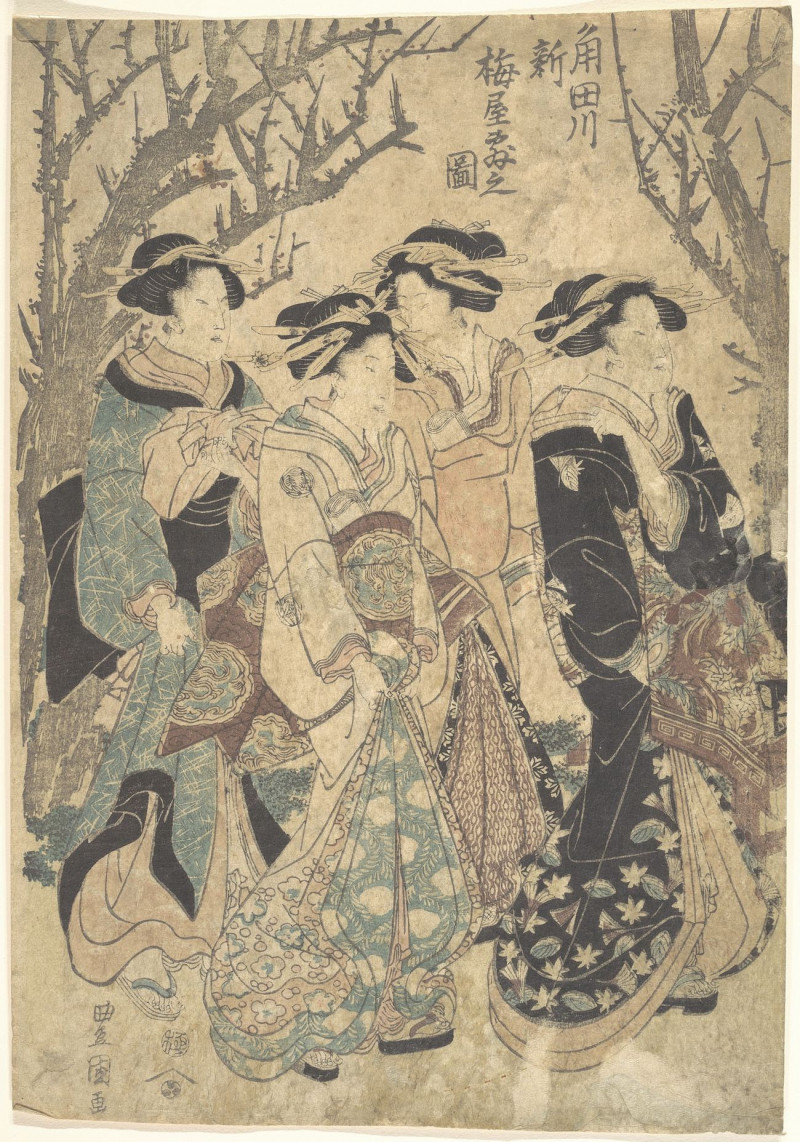


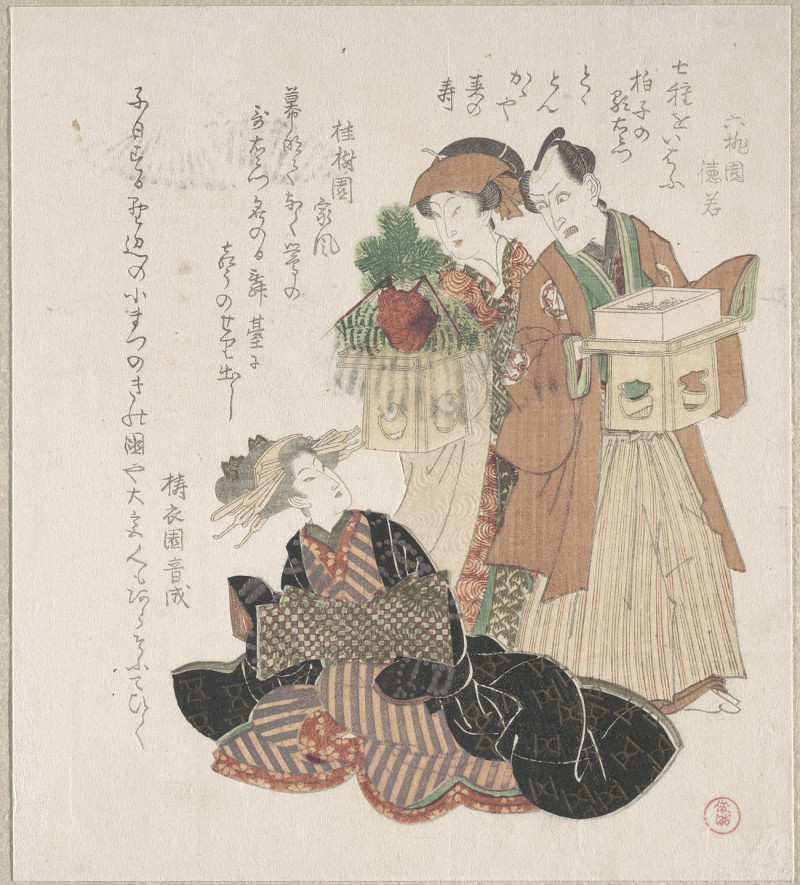
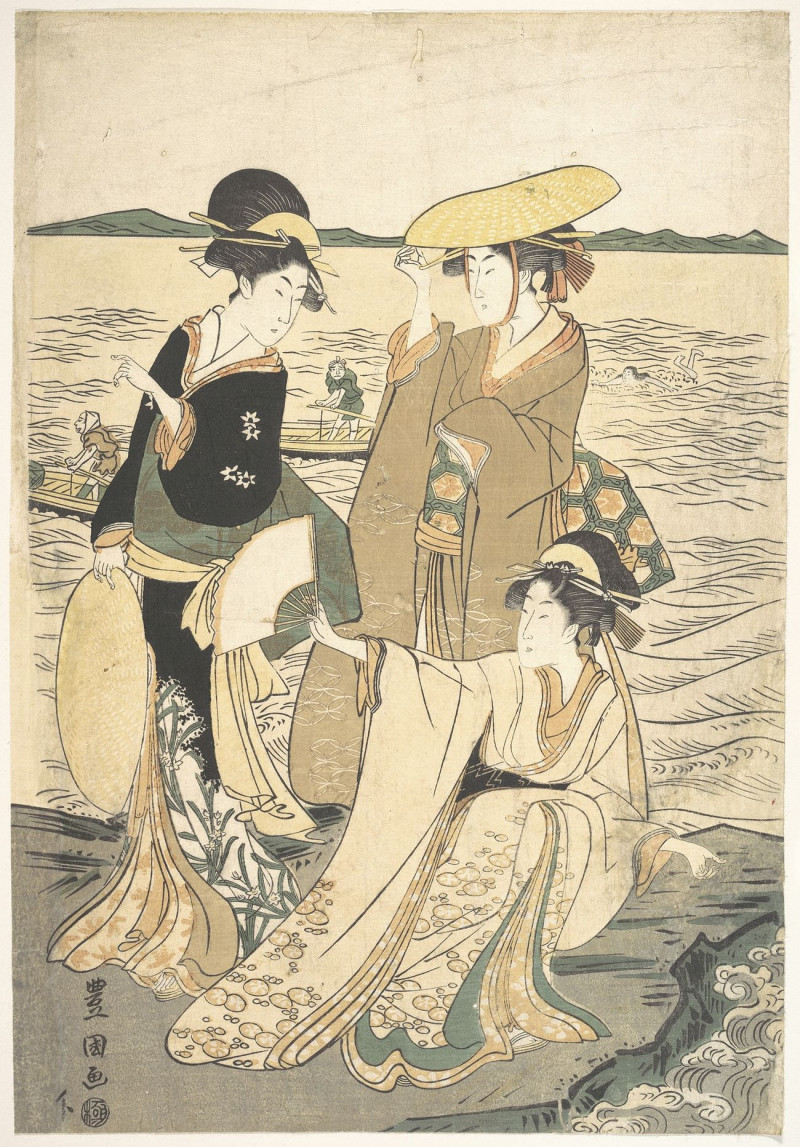
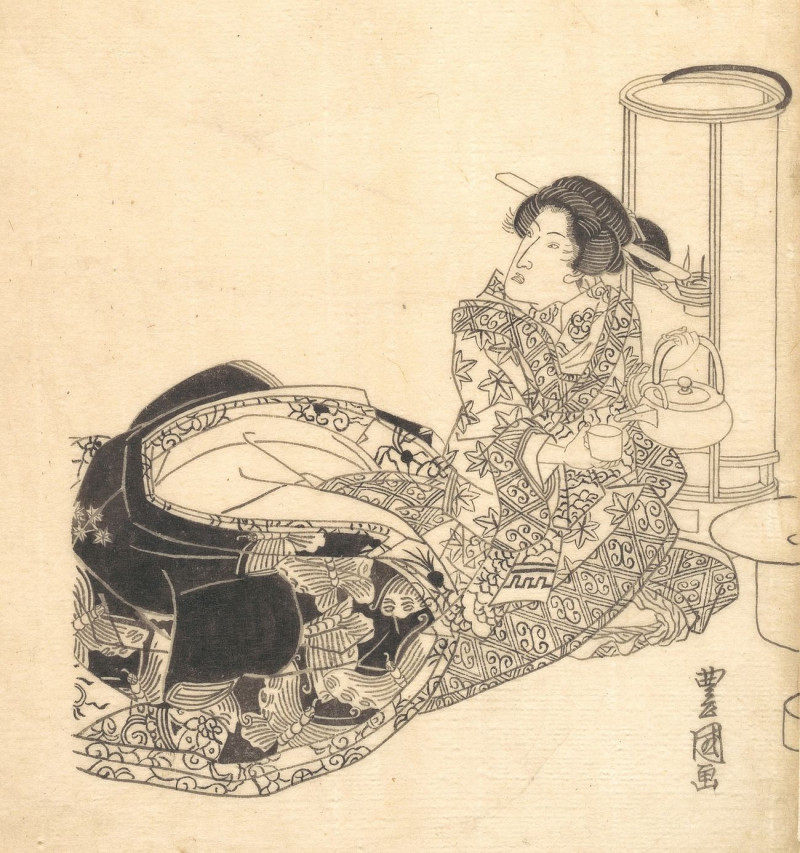

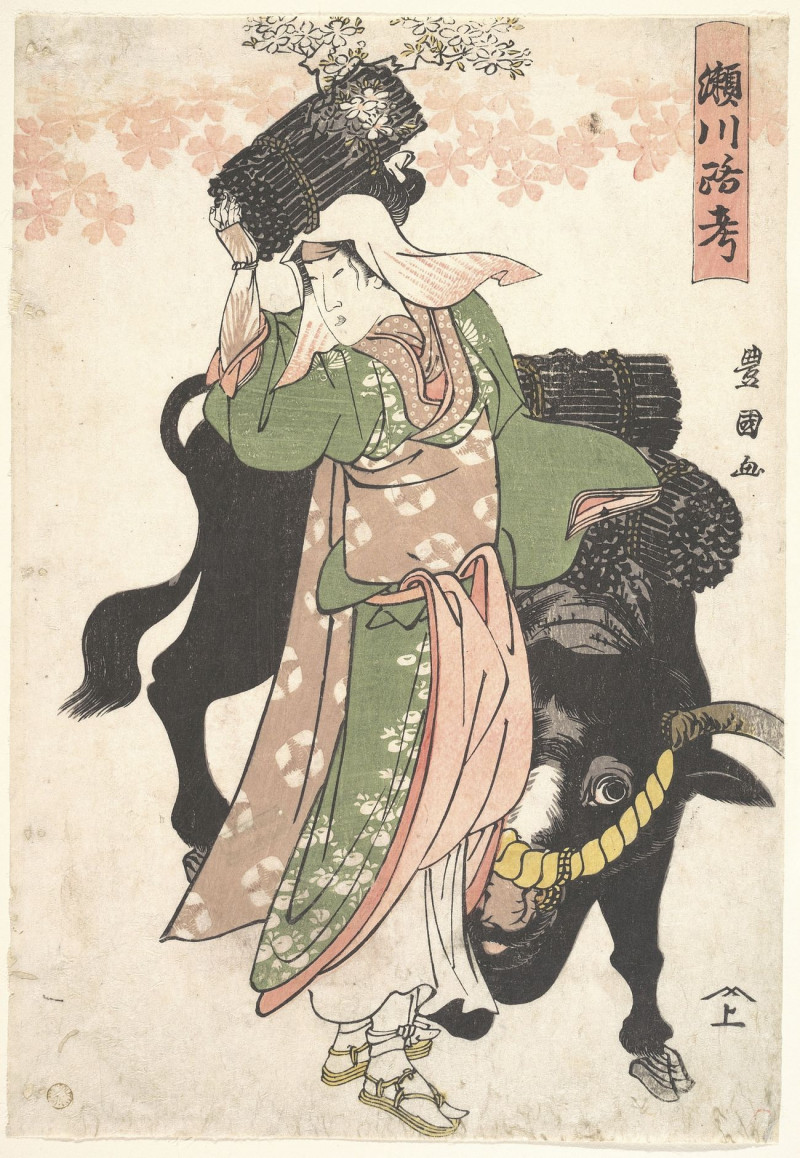
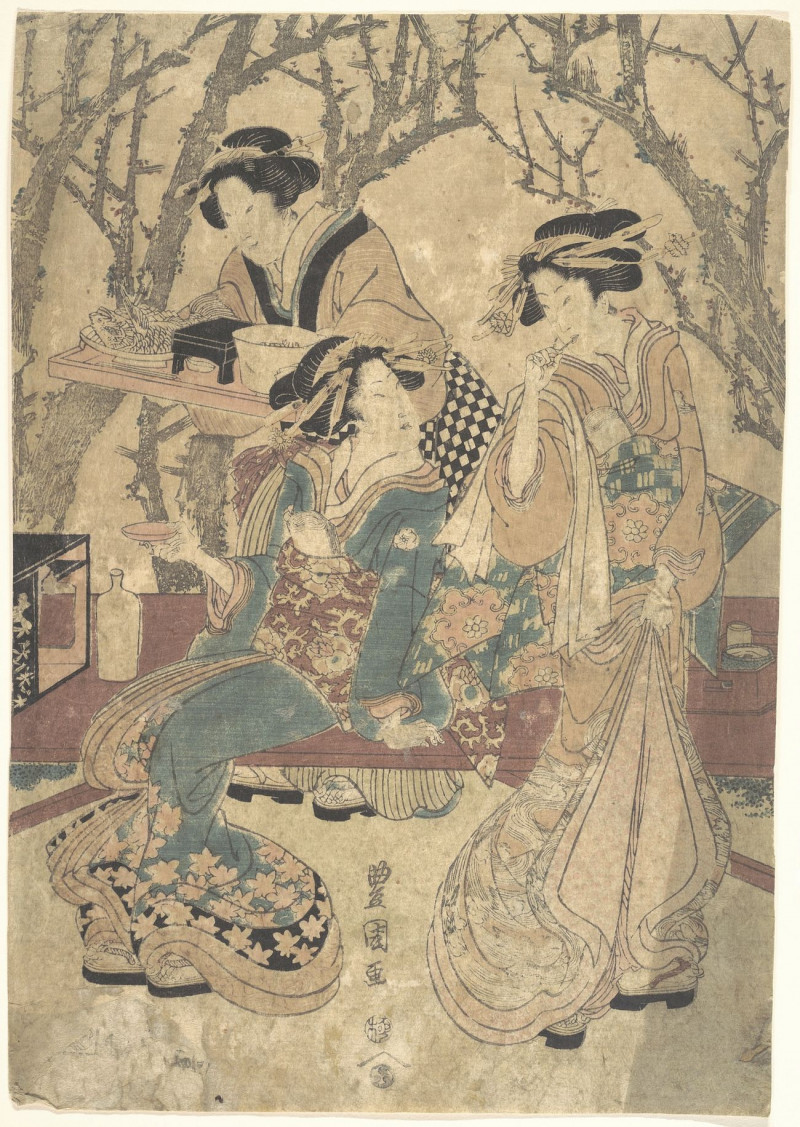
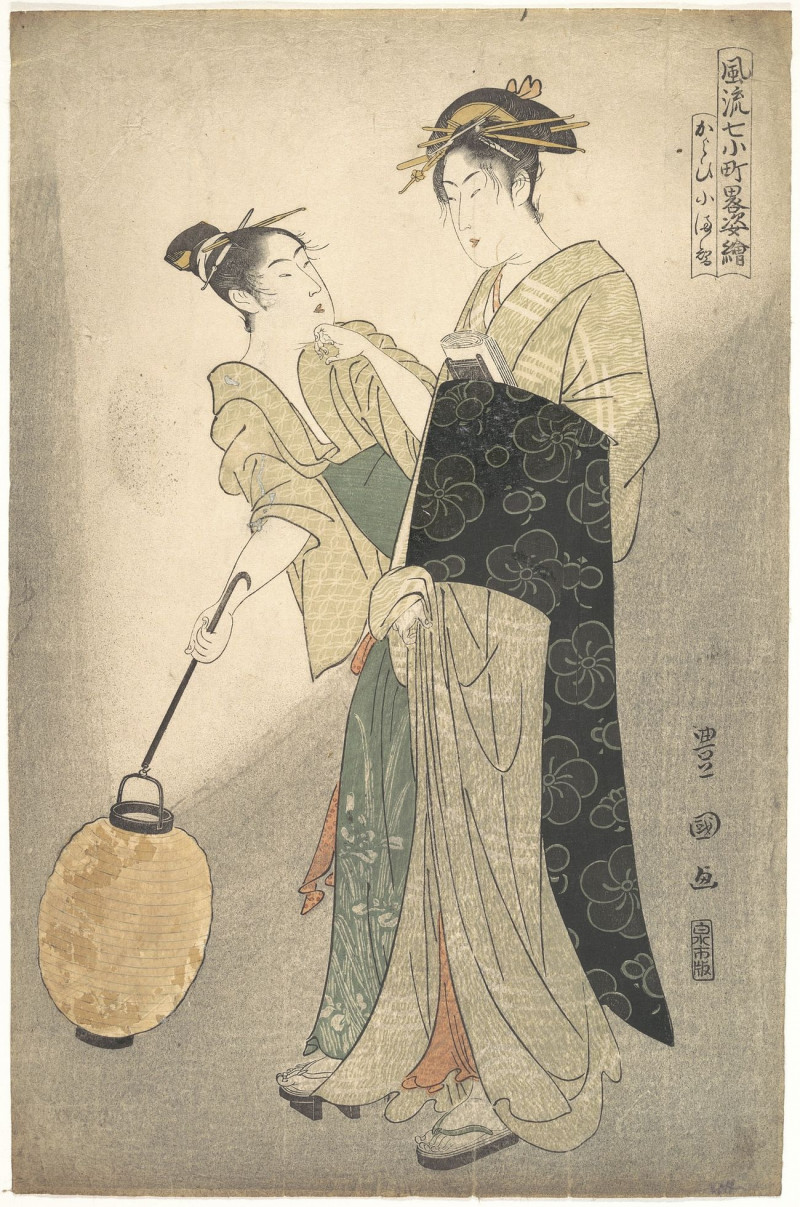


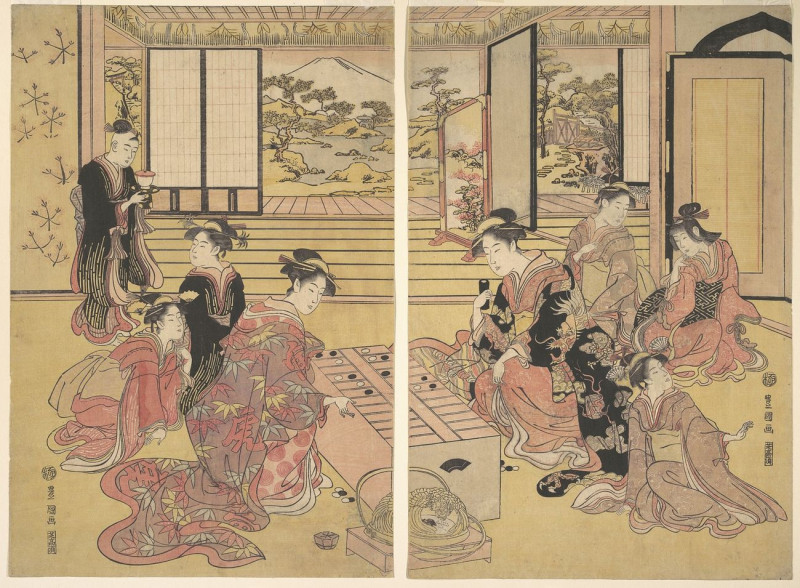

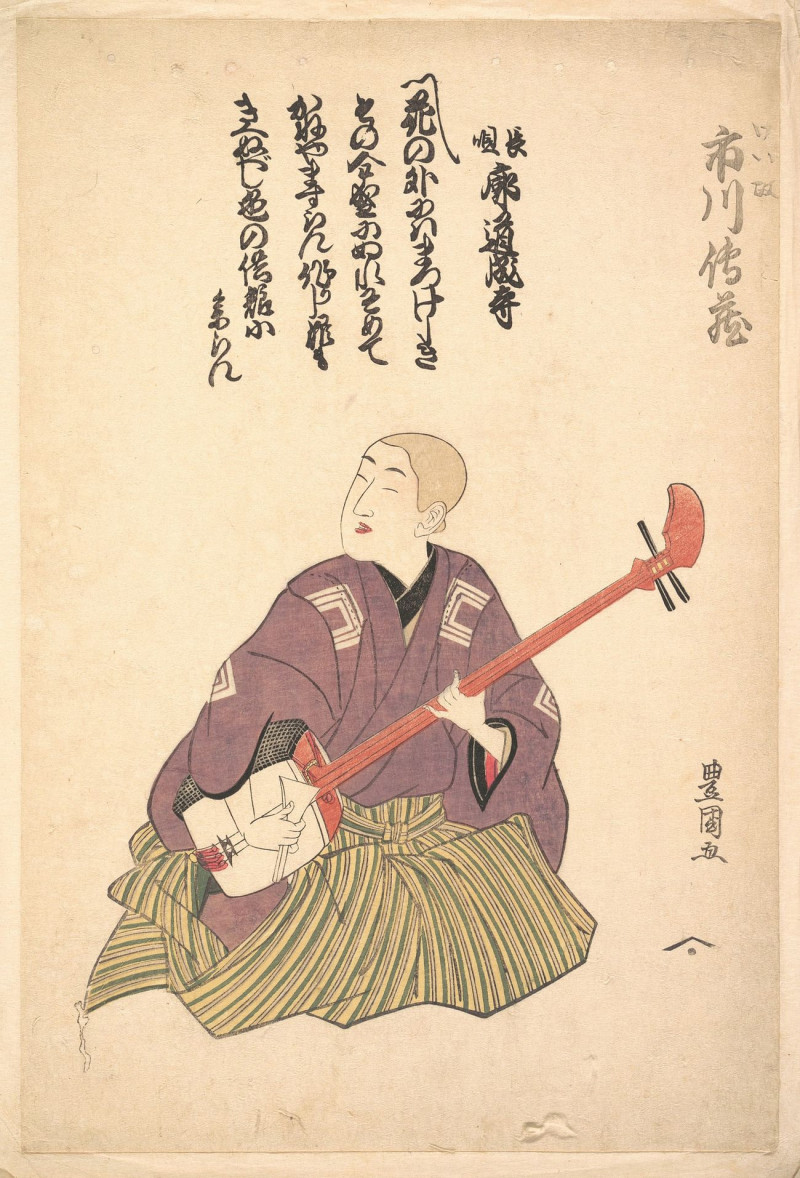

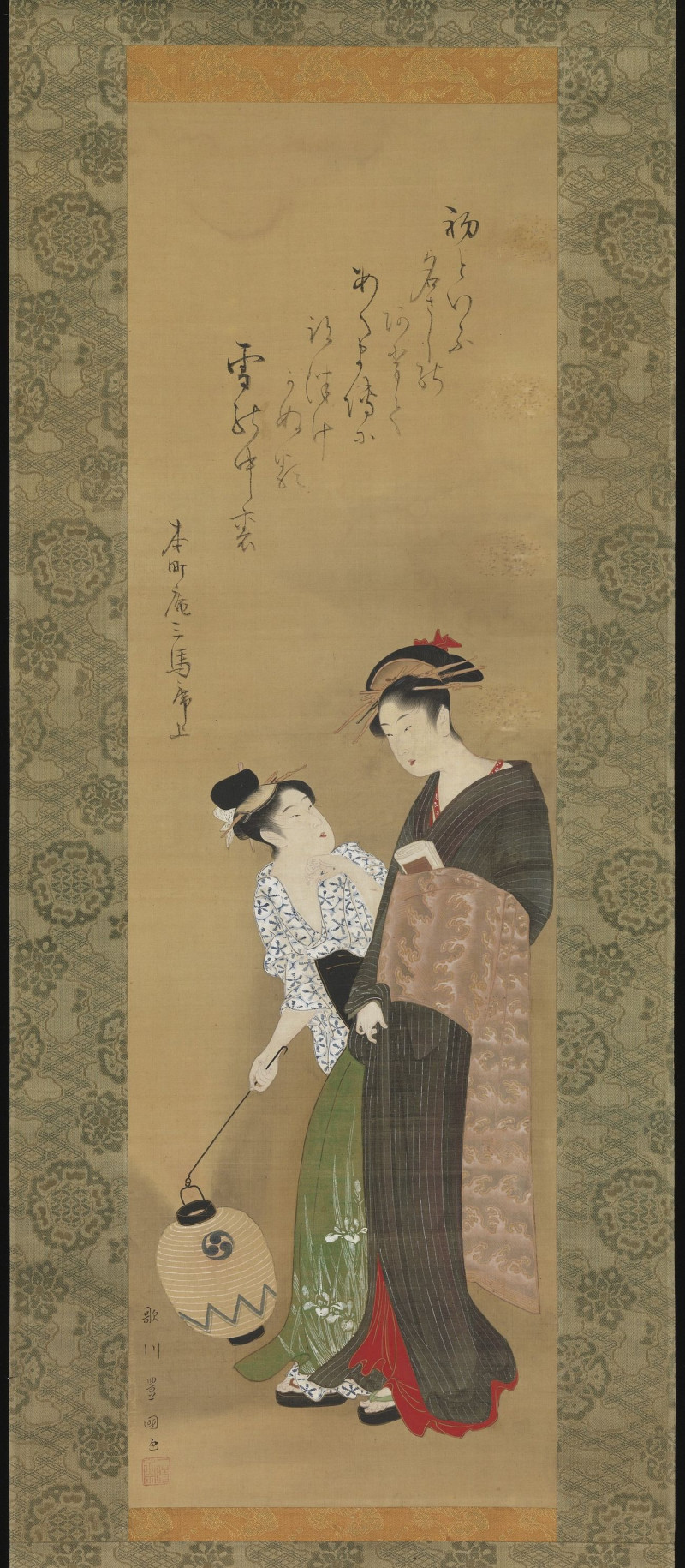
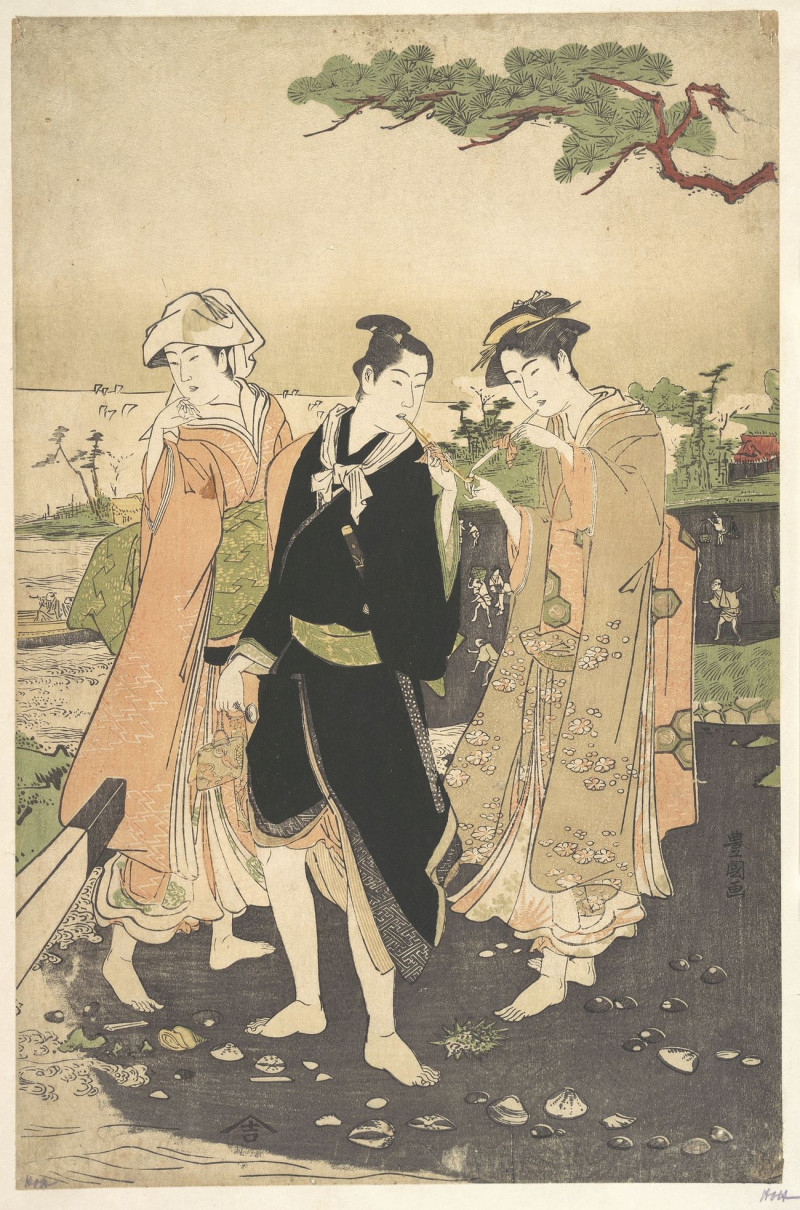

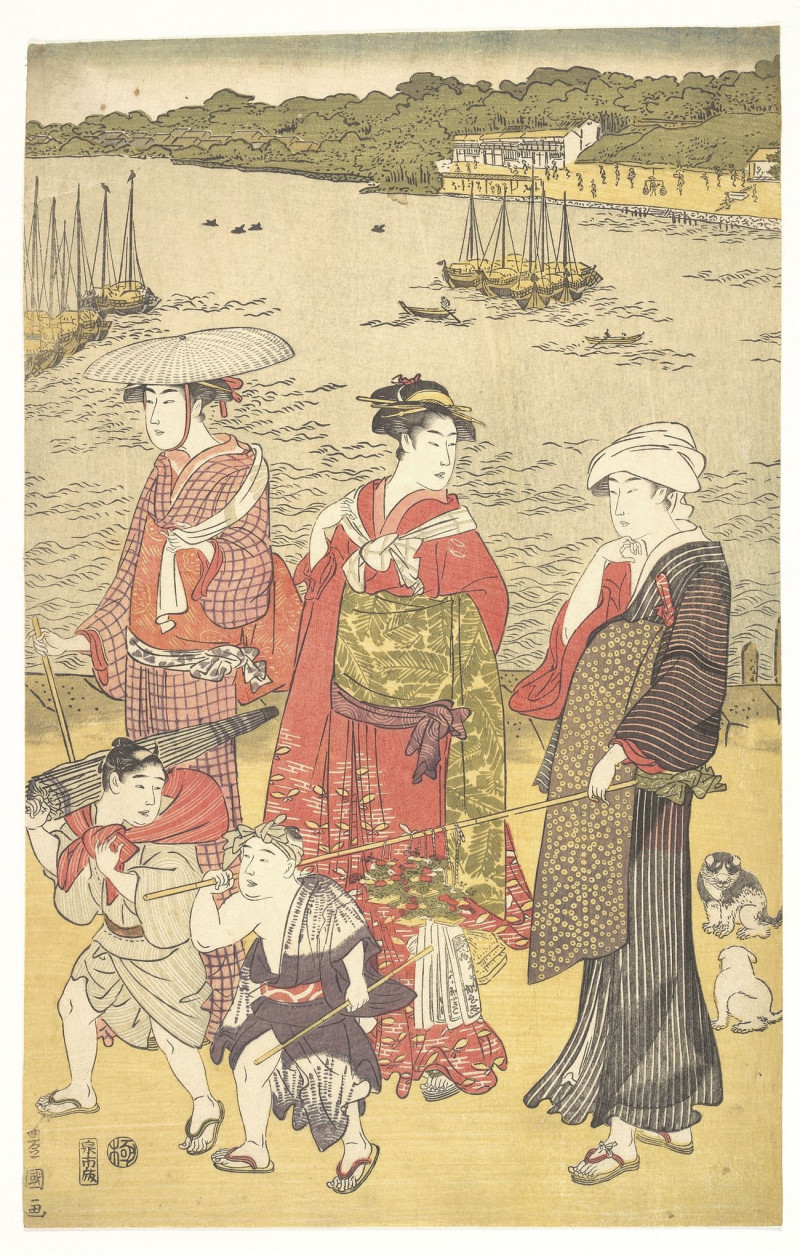
![Amusements Of Kabuki Actors Of The “Third Floor” [Dressing Room] reproduction of painting by Utagawa Toyokuni. ALL GICLEE PRINTS](https://reprodukcijos.lt/32918-large_default/reproduction-of-amusements-of-kabuki-actors-of-the-third-floor-dressing-room.jpg)
